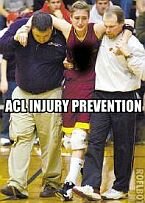Back Pain (Low Back Pain)
If you are among those who have already experienced a bout with low back pain, then you know how debilitating it can be. In the western world, 80% of the population will experience disabling low back pain during their lives.(1) Back pain is the second most common reason patients visit doctors and costs the U.S. economy $25 billion per year.(2) Low back pain clearly represents the single greatest and most inefficient expenditure of health care resources in our society today.
Understanding the anatomy of the back will help you understand why and how back problems occur. The spine is composed of 24 bones called vertebrae. The lower back or lumbar spine has five vertebrae whose functions are to bear weight and provide a protective covering for the spinal cord. In-between each pair of vertebrae are cushions called discs. The main responsibility of the disc is to absorb the compressive forces to which the spine is subjected.
Most back pain is preventable and often is caused by too little exercise, overuse, poor exercise or work positioning, lack of flexibility, and poor posture. Smoking can cause decreased blood flow to the spine as well as a loss of bone density.(3) Even obesity is a cause of low back pain due to the increase pressure the excess weight puts on the spinal discs. All of the above may result in arthritic or degenerative changes in the spine, disc herniations ("slipped discs"), muscle spasms, spinal joint irritation and dysfunction and nerve irritation.
Over time, spinal arthritis may develop. The discs narrow and wear out and the vertebrae crumble often forming spurs which narrow and compress the area through which the spinal cord and nerves pass. A disc herniation occurs when the outer wall of the disc weakens and the jelly like middle causes that outer wall to bulge out. This bulging may "pinch" the nerve exiting from the spinal cord or the spinal cord itself. The middle may even squirt out and form a separate fragment, like a piece of floating cartilage in the knee.
Non-musculoskeletal and potentially more serious problems like kidney disease, certain types of cancer gallbladder disease, prostate disorders (all men over 40 should have a prostate examination yearly), ovarian and uterine disorders, and aortic aneurysm may also cause back pain. A thorough examination by a medical doctor, osteopathic doctor or doctor of chiropractic to properly diagnose back pain is essential.
Initial treatment for lower back problems includes stopping your activity immediately and icing the lower back for 20 minutes. Lie on your back directly on top of the ice pack with your knees bent. Keep a thin towel or shirt between the ice pack and your skin.
If your low back pain persists, see a chiropractor or medical doctor. Treatment guidelines were published by the U.S. Agency for Health Care Policy and Research entitled Acute Low Back Problems in Adults which stated "relief of discomfort can be accomplished most safely with nonprescription medication and/or spinal manipulation."
The key to low back pain is really prevention. A proper warm-up before any sports activity is important to preventing low back pain. This means walking for at least five minutes and then stretching after the walk.
Many of us are simply out of shape. Too many of us play a sport to get or stay in shape. It should be the reverse- you must get in shape to play a sport. This means a complete exercise program including aerobic exercise (30 minutes a day, at least three times a week), strength training (twice a week working on all the major muscle groups) and stretching.
The most important area to exercise is the midsection: the abdominal muscles, the twisting muscles or obliques and the lower back muscles. A strong midsection will protect you against low back pain.
See Active Release Techniques® and Graston Technique for more information on injury care and prevention.
|
The Ultimate Nutritional Lie Detector Test LEARN MORE 
|
Kettlebell Rehab

Click Here
To See How Kettlebells will transform your body!
Vortex Rehab

Click Here
To See How This
Revolutionary Machine
Can Help You!
Partner / Support

Loans up to 3 months - fast cash advances for up to 90 days and up to $5,000!


















